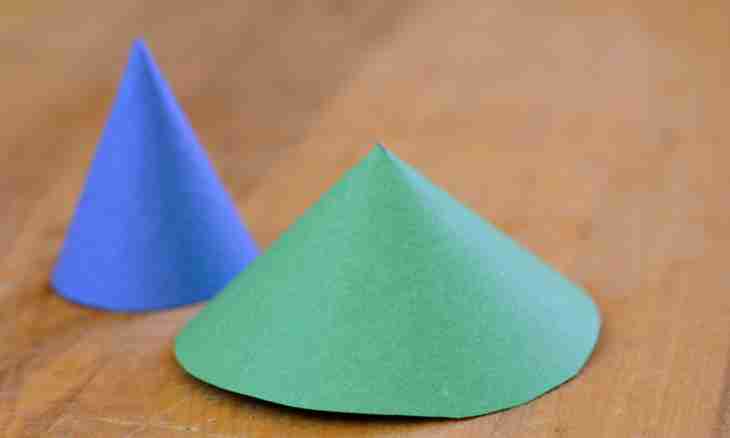The truncated cone is called the solid which turned out as a result of the section of a full cone the plane parallel to its basis. According to other definition, the truncated cone is formed by rotation of a rectangular trapeze around that its side which is perpendicular to the bases. The second side at the same time is forming. It is necessary to calculate it as well as side of a rectangular trapeze.
It is required to you
- - the truncated cone with the set parameters;
- - ruler;
- - pencil;
- - calculator;
- - Pythagorean theorem;
- - theorems of sine and cosines.
Instruction
1. Make the drawing. Designate on it given sizes of the truncated cone. It can be constructed in several parameters. Radiuses of the basis and height have to be known to you. There can be also other data sets — for example, radiuses of both bases and a tilt angle forming to one of them. Height, a tilt angle and one of radiuses can be set. If you for the present do not know the necessary parameters for creation of the exact drawing, draw a cone approximately and designate the available conditions.
2. Construct axial section. It represents an isosceles trapeze of ABCD which parallel parties are diameters of the basis, and side — forming. Designate axis points of intersection with the bases of the truncated cone as O' and O''. Axis O'O'' at the same time is also height of the direct truncated cone. Designate the radius of the lower basis as R, and top — as r. Forming CD designate as L.
3. Execute additional construction. Draw from a point the C height to the radius of the lower basis. It will be parallel and is equal to O'O' axis'. It with the plane of the lower basis designate a point of intersection as N, and height — h. At you the rectangular triangle of CND turned out.
4. Look what data for calculation of a hypotenuse of this triangle are available for you and find missing. Provided that both radiuses are given, find the party of DN. It is equal to the difference of radiuses of R and r. That is, according to Pythagorean theorem, the party of L in this case is equal to a square root from the sum of squares of height and the difference of radiuses or L = √h2+ (R-r)2.
5. If height of h and a tilt angle forming to the basis are given find forming the L in theorem sine. It is equal to fraction in which numerator there will be the known leg of h, and in a denominator — a sine opposite it CDN corner.
6. Provided that the radius of the top circle, height and a corner of BCD are given, calculate at first a tilt angle necessary to you forming to the lower basis. Remember what the sum of corners of a convex quadrangle is equal to. It is equal 360 °. At a rectangular trapeze of O'O '' CDs are known to you three corners. Find on them the fourth and on its sine — forming.

